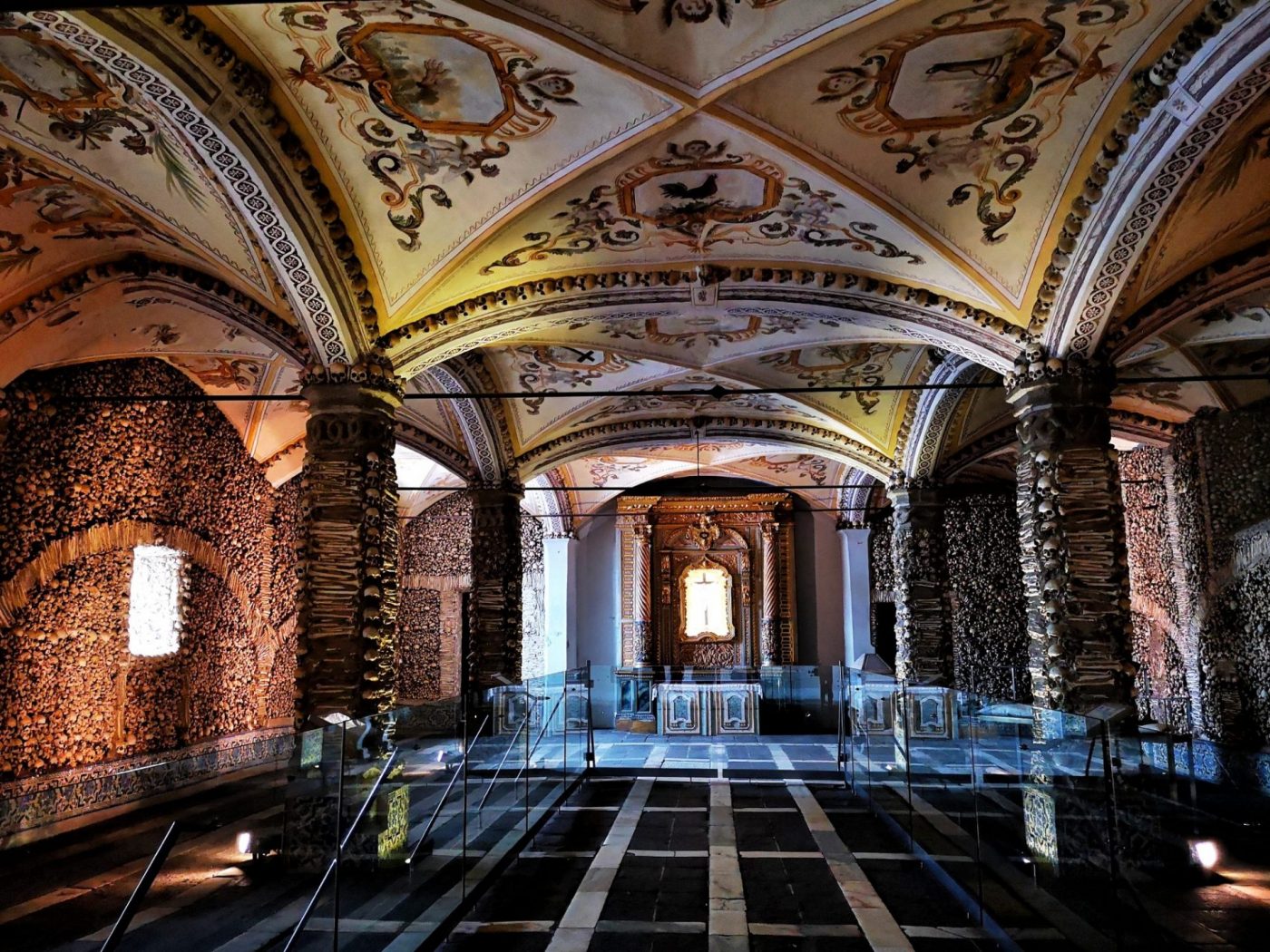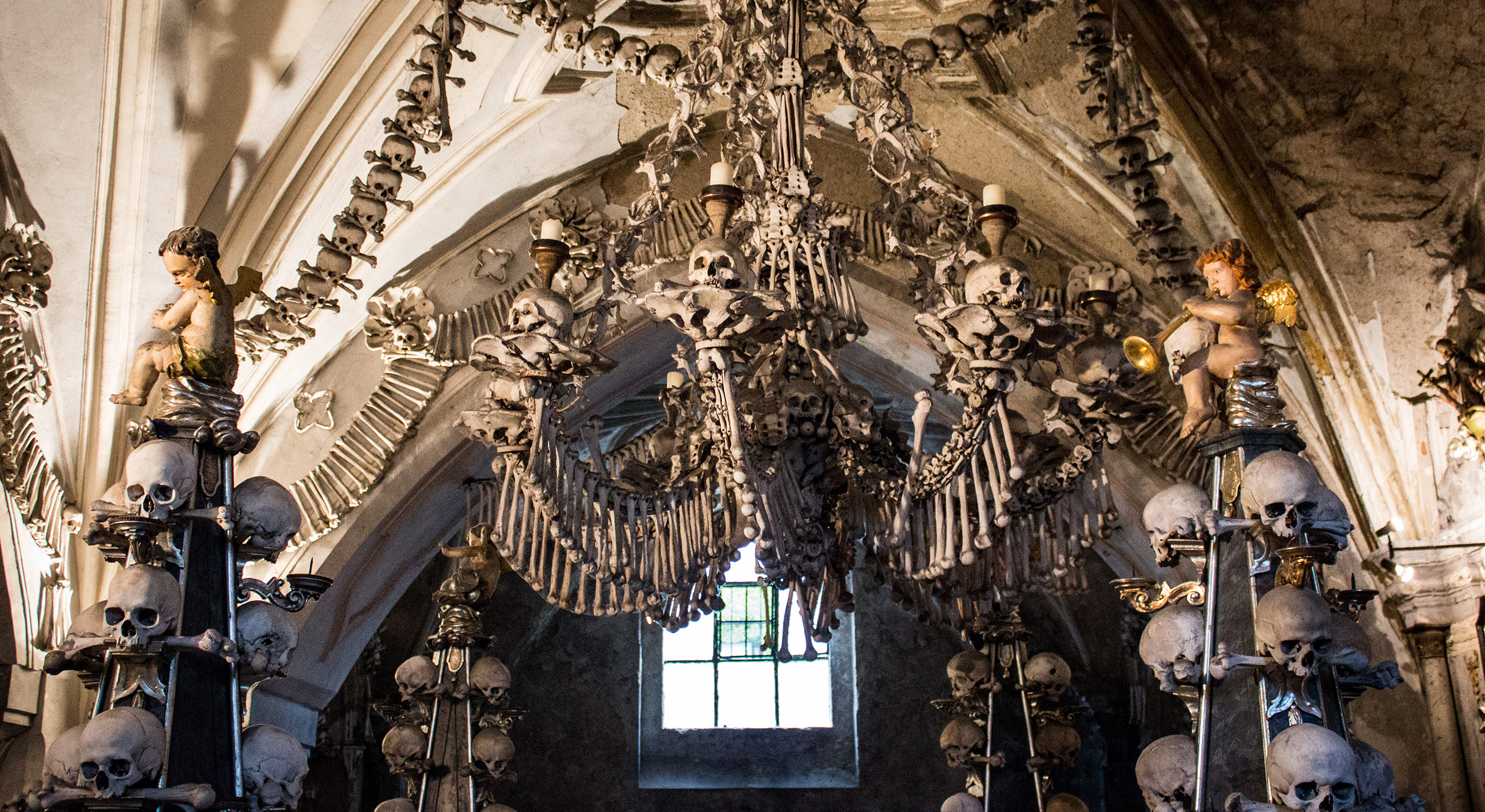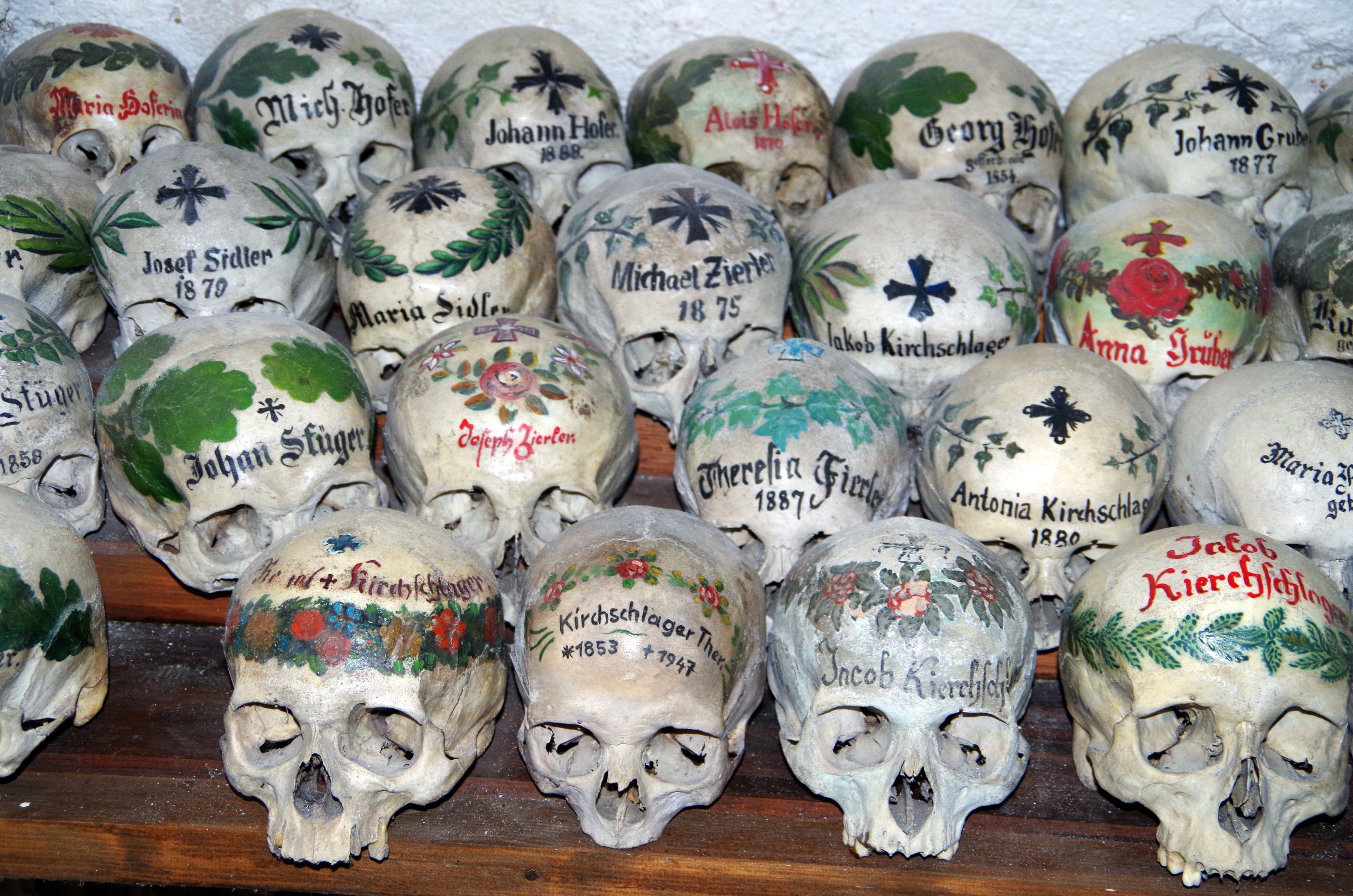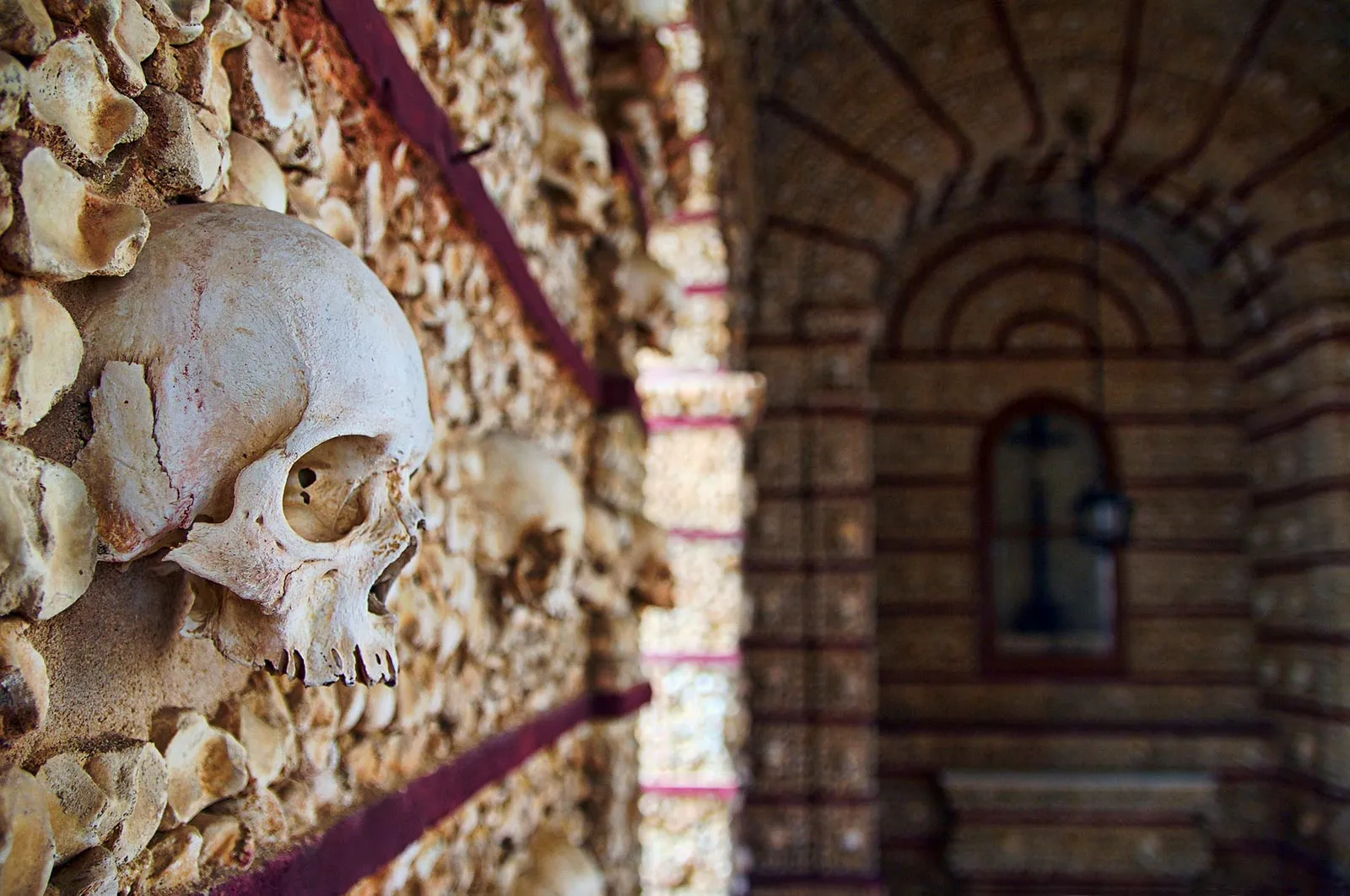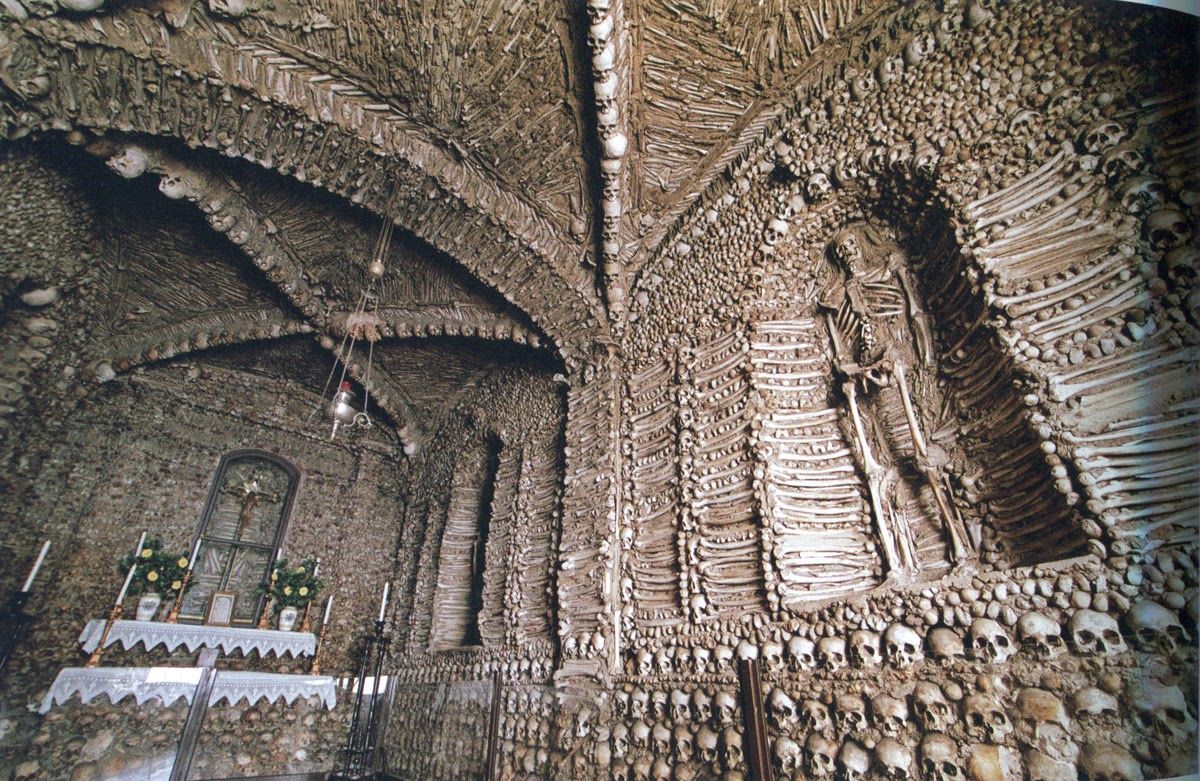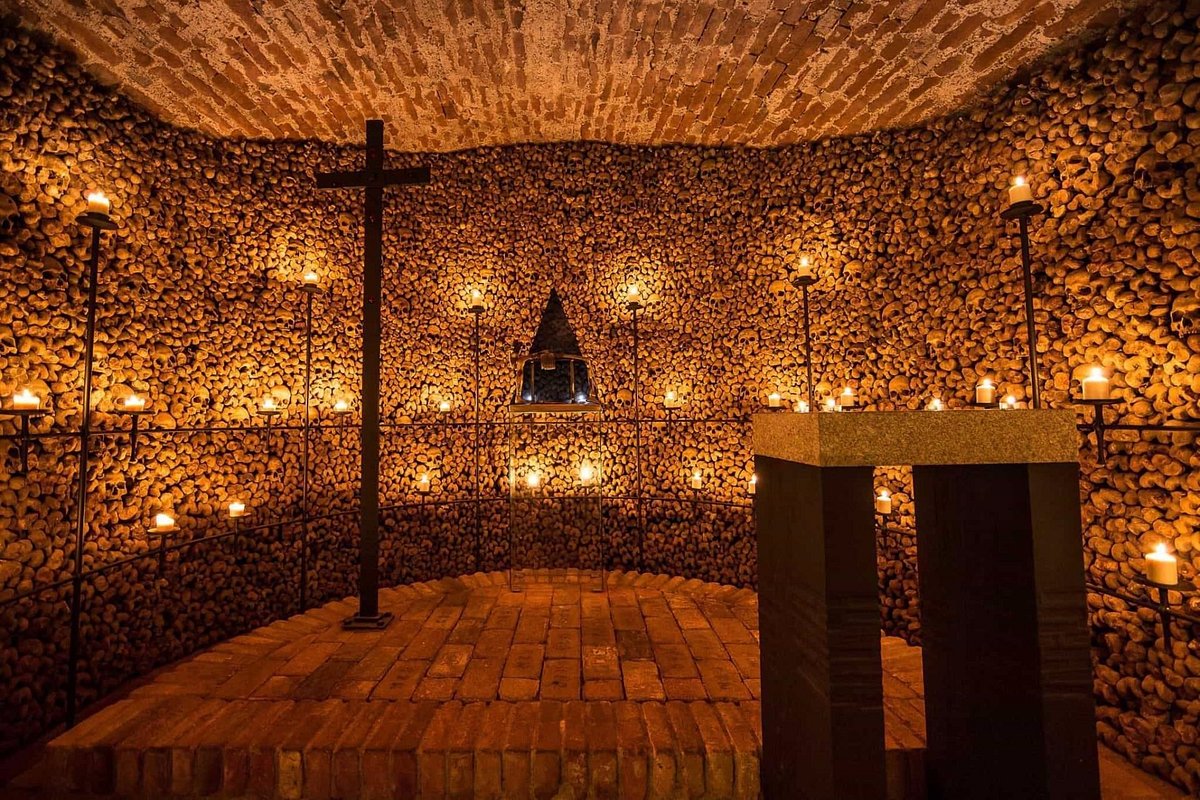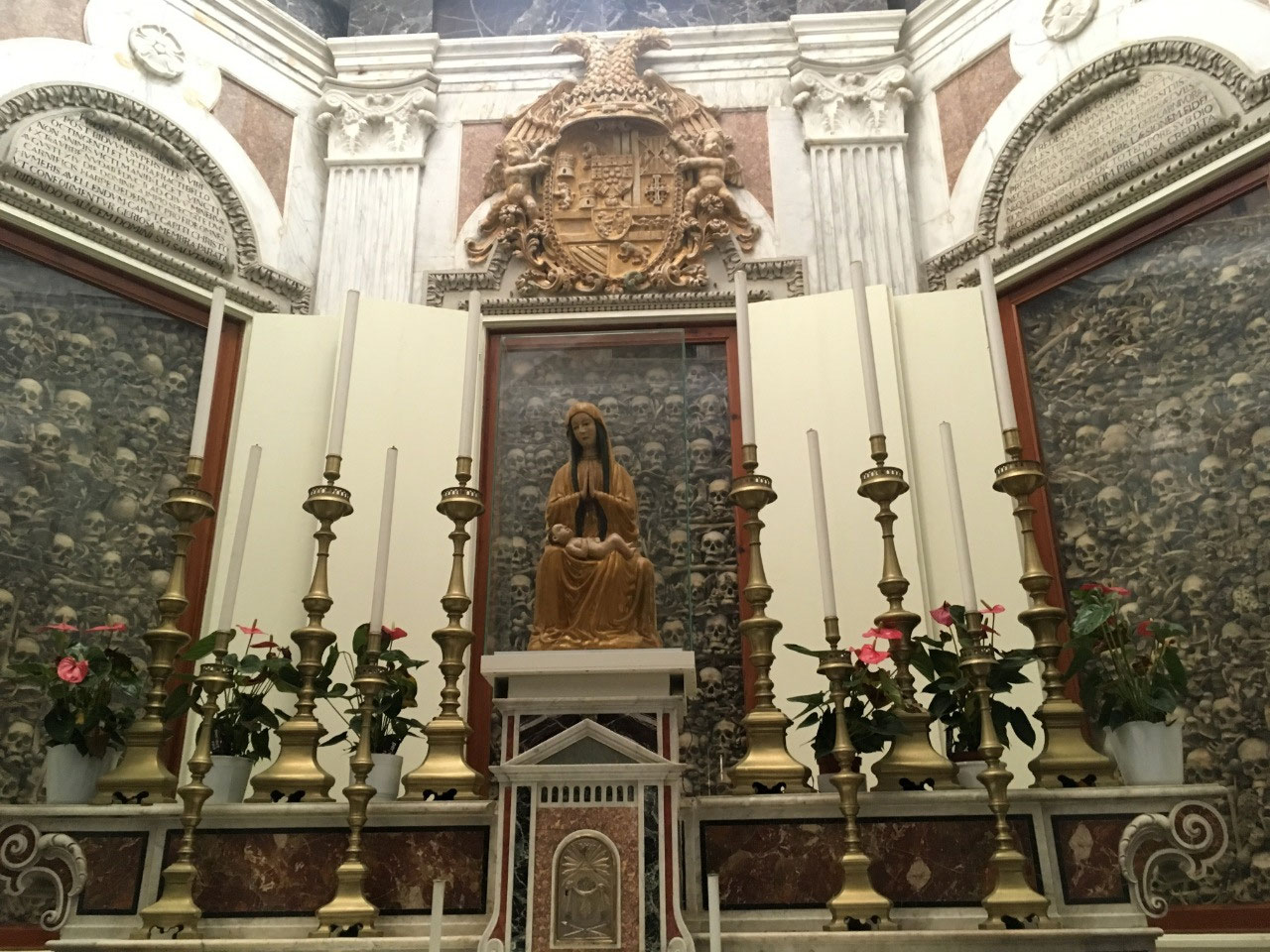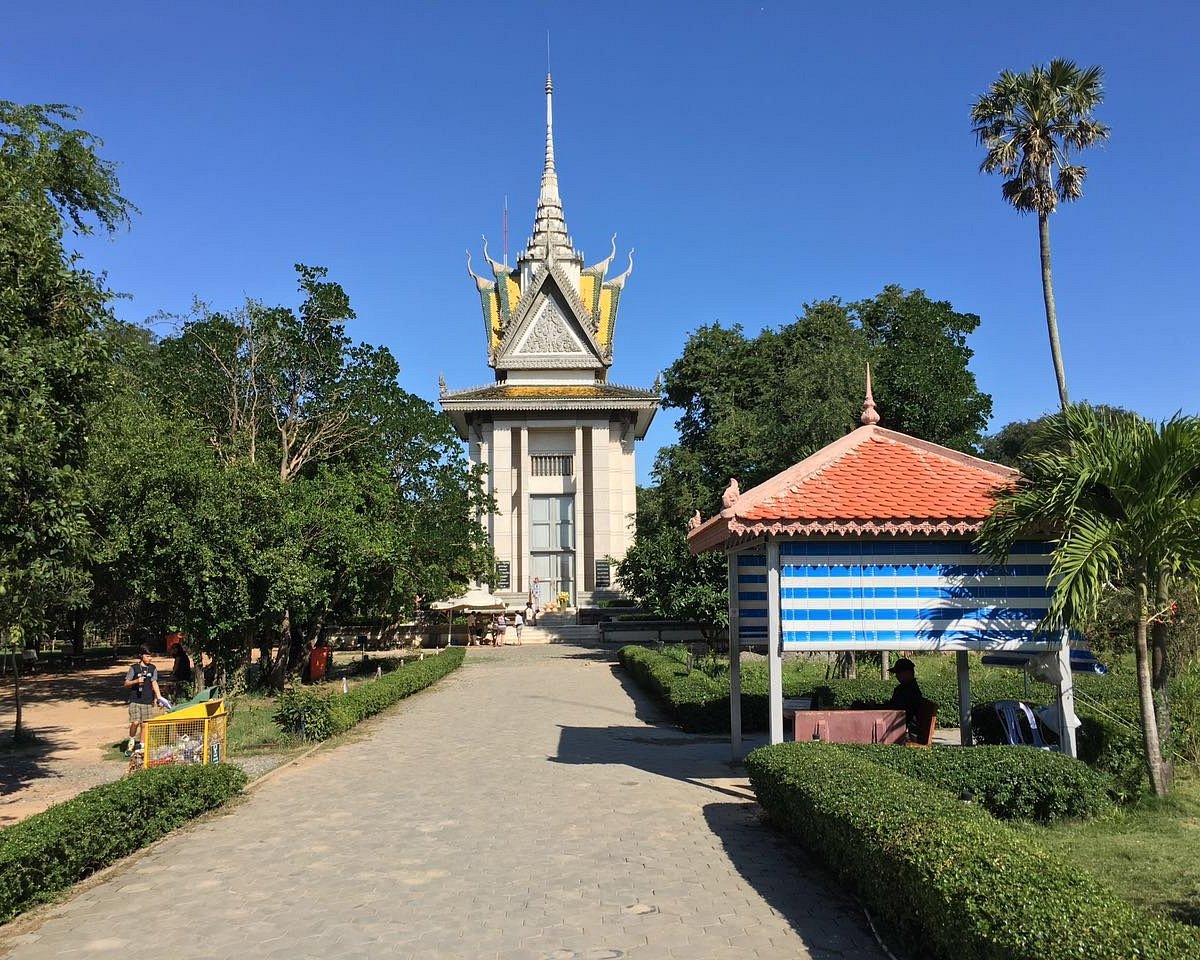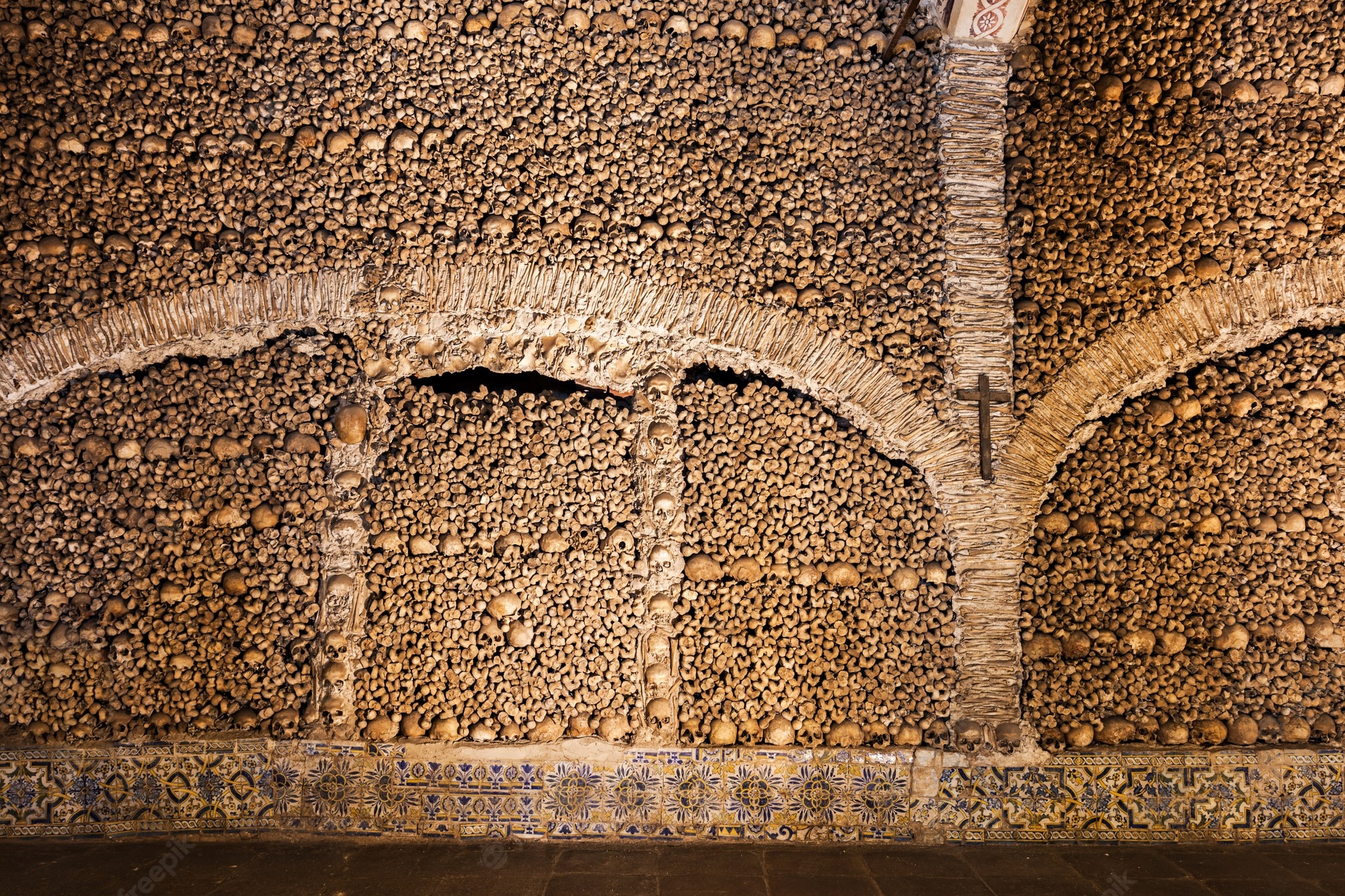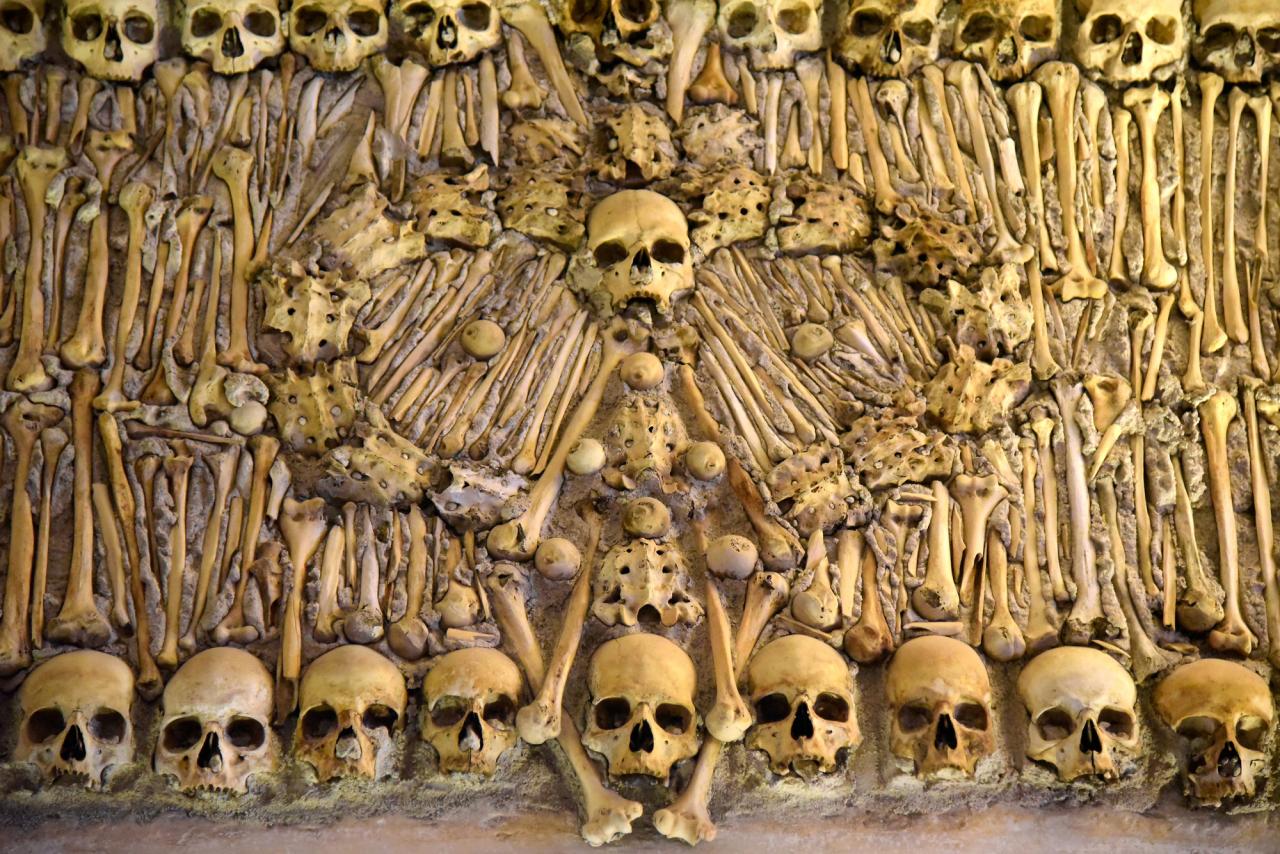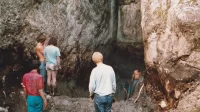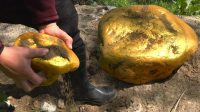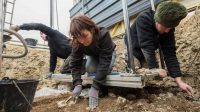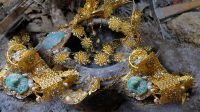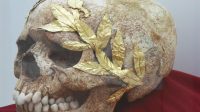San Bernardino Alle Ossa, Milan, Italy
If you enter the church of San Bernardino alle Ossa and turn right instead of left, you’ll find an unexpected and interesting sight: a little chapel filled completely with bones.
This ossuary originated from the 13th century and is embellished with 17th-century murals.
Sitting inside the church, you’ll see bones climbing the walls all around you, with skulls conspicuously displayed in certain areas.
The bones are said to be largely from patients who died at the neighboring Brolo Hospital, as well as from surrounding cemeteries.
According to legend, the skulls found over the entrance may have originated from a different source, such as executed captives.
San Bernardino alle Ossa is a free-to-enter museum situated less than a 10-minute walk from Milan’s famed Duomo, making it an easy addition to any Milan itinerary.
Brno Ossuary, Brno, Czech Republic
The Brno Ossuary is Europe’s second-largest ossuary, with approximately 50,000 bones from individuals who perished largely during the Black Death.
Because of its position under the church of St. James, it is also known as the Ossuary beneath the church.
There are various routes with bones stacked up against the walls and on the ground. There are also some whole examples of children’s bones on exhibit. Those who did not succumb to the epidemic perished as a result of combat wounds.
It’s made much creepier by the fact that some of the skulls still retain their teeth. The admission price is rather low, at 70 CZK (about 3 USD).
Ossuary Chapel Of The Cathedral Of Otranto In Otranto, Puglia, Italy
One of the most significant things to do when visiting the Adriatic Coast of Puglia, Italy, is to see the Ossuary Chapel of the Cathedral of Otranto.
The remains of the Martyrs of Otranto, 800 residents who refused to abandon their Christian faith and convert to Islam during the siege of Otranto by Ottoman troops in 1480, are housed in the Roman Catholic Cathedral dedicated to the Annunciation of the Virgin Mary.
The victims were beatified in 1771 and canonized on May 12, 2013, after being decapitated on the Hill of Minerva.
Their remains are maintained under glᴀss and on exhibit at the Cathedral of Otranto’s Ossuary Chapel, which is available to the public.
Choeung Ek Genocidal Centre – The Killing Fields, Phnom Penh, Cambodia
The ‘Killing Fields’ at the Choeung Ek Genocide Centre on the outskirts of Phnom Penh, Cambodia, are one of the most somber sights to visit as a ‘dark tourism’ destination.
A glᴀss stupa (tower) meticulously packed with the bones of 9,000 victims serves as a memorial of the Khmer Rouge’s atrocities from 1975 to 1979.
The dictatorship slaughtered an estimated 1.7 million Cambodians in total. On the Choeung Ek site, which has 129 mᴀss burial trenches and where bones and clothes still resurface after severe rains, almost 20,000 people were slaughtered.
An audio tour takes guests through the grounds and concludes with the stupa to tell the terrible narrative.
The stupa contains ten layers of human bones, a reminder to the tragedies that took place barely 40 years ago.
The Capela dos Ossos Évora in Portugal is the only church constructed of bones that we have personally seen. While these suggestions are particular to the ossuary, they are equally applicable to other ossuaries.
- Respect each other.
- Remember that although adults may find an ossuary tour intriguing, children may find it disturbing. This is particularly true in Evora. Evora’s bone chapel, like most others, has beautiful decorations. Evora, on the other hand, adds two whole skeletons hanging from chains, one of which is a toddler.
- The Capela dos Ossos is open in the morning and later in the afternoon. There are just a few hours available, which may be found here.
- There is a minor admission charge as well as a cost for taking pH๏τographs.
A Capela dos Ossos (The Chapel Of Bones) in Évora, Portugal in 4K
The Walls Of A Chappel Of Bones

